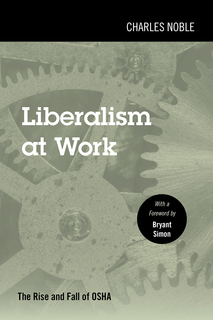Liberalism at Work
The Rise and Fall of OSHA
With a Foreword by Bryant Simon
On paper, the Occupation Health and Safety Act (OSHA) required employers to reduce the risks of illness and injury on the job regardless of the cost. Department of Labor health and safety inspectors could now show up unannounced at factories, construction sites, and offices and levy fines against employers who failed to comply. OSHA never lived up to its promises, however. Within a decade of the law’s passage, employers were eliminating safety measures as soon as profits waned. From the start, OSHA’s funding was tenuous and fines for violations were so low that employers rarely took a severe financial hit when they did not follow the law’s provisions.
With clear prose and sharp analysis, Charles Noble’s 1986 book, Liberalism at Work: The Rise and Fall of OSHA, points to the reasons why predictions that OSHA would change the balance of power between employers and employees did not come to pass. Noble writes a radical critique of OSHA and of the larger, postwar New Deal order of reform and regulation. But beyond that, Noble’s book encourages us to think past OSHA and the workplace and boardroom politics surrounding it and to examine our ideas about government, regulations, and the power of business.
Table of Contents
Metadata
- isbn9781439917961
- publisherTemple University Press
- publisher placePhiladelphia, PA
- restrictionsCC-BY-NC-ND
- rightsCopyright © 1986 by Temple University—Of The Commonwealth System of Higher Education
First published 1986. Reissued 2019.


